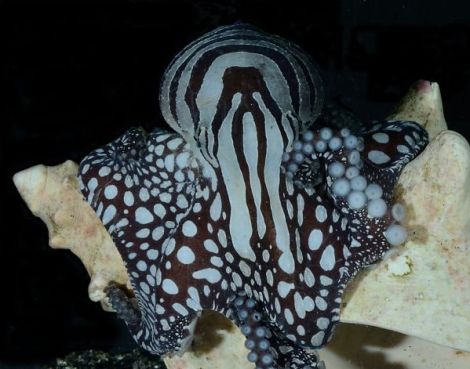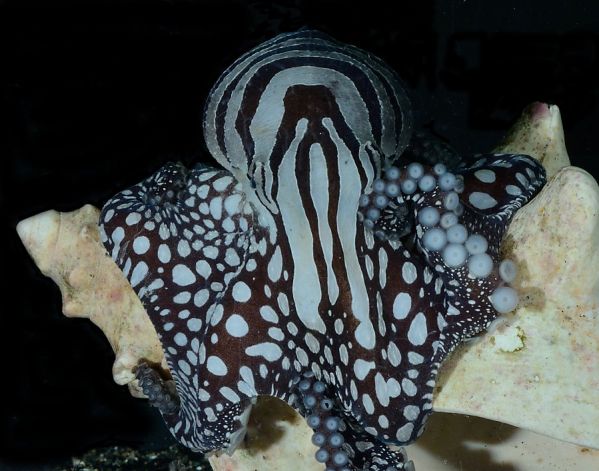
Dr. Roy Caldwell
The recent story of the unusual Larger Pacific Striped Octopus wanders off in exactly eight directions, one for each of its tentacles. It is therefore difficult to know where to begin, or end, or focus one’s attention.
1. The species was only discovered very recently, in Nicaragua in the late 1970s. Its preference for living 130 feet underwater, near the murky mouths of rivers, made it virtually unspottable by divers. A Panamanian biologist named Arcadio Rodaniche discovered it, and he wrote up his findings in a 1991 paper that was never published.
2. Although the Larger Pacific Striped Octopus was discovered more than 35 years ago, two scientists, Roy Caldwell and Richard Ross, last week issued a press release to let people know about the species. It’s been sort of neglected by everyone but Caldwell and Ross, and they are choosing this moment to say “Hey, look at this rare and unusual octopus. Stop ignoring it. It is special.” (I paraphrase.)
3. The third story corresponds to the right third tentacle (the hectocotylus), which contains the male octopus’ sex organ. Because it turns out this particular species of octopus is kinda kinky — well, kinky for an octopus, because essentially what’s so weird is that it bones in the missionary position. It has only now been confirmed that this species procreates “beak to beak.” For the males of many cephalopod species, this would result in getting instantly eaten by the female. Not so here.
4. This octopus is so under-evaluated that it still has no official scientific name. In spite of its small size (10 inches arm to arm), it is called the Larger Pacific Striped Octopus to differentiate it from the Lesser Pacific Striped Octopus (Octopus chierchiae), which is tiny.
5. In fact, one of the only people to try to publish about this octopus was that Panamanian biologist, Arcadio Rodaniche. But nobody believed the findings in his 1991 manuscript, because they were just too weird. The paper was unable to pass peer review, and nobody has had much interest in this species since.
6. Here’s what Rodaniche claimed, and everyone else had trouble swallowing: The Larger Pacific Striped Octopus is the one and only octopus that lives in a sort of hippie commune or kibbutz. While most octopi are solitary when not mating, these ones hang out in tribes of roughly 40. That’s 320 tentacles all grooving together. And, unlike most species, the moms can keep churning out more babies, every so often, instead of dying shortly after childbirth. As it turns out, this is all correct. So, the news is basically, “Hey, that Panamanian biologist was right. Oops. Where did he go?” (Turns out he retired from the Smithsonian to Altoona, Pa., where he makes paintings of octopuses.)
7. As a further human-interest twist, our scientist Richard Ross wants you to know that he is breeding these creatures in a spare bedroom in his Alameda home, in a 100-gallon aquarium. His 10-year-old daughter feeds them when he is away, and she may soon share a room with them. I have a friend who has always had nightmares about octopuses breaking into her home at night and eating her. This situation would therefore terrify my friend to death.
8. Caldwell feels this is “the most beautiful octopus I have ever seen.” It has unusual markings and changes its colors in nice ways. Evidence is here:
So why do we care? How do these eight tentacular stories cohere into a whole? Well, because stories like this remind us that we know very, very little about what is living on Planet Earth, and only slightly more about those things that we know to exist. And, of course, who knows what species we are wiping out, daily, before they have even been discovered? Plus, we just think it’s funny that there are octopuses living in a little girl’s bedroom.




